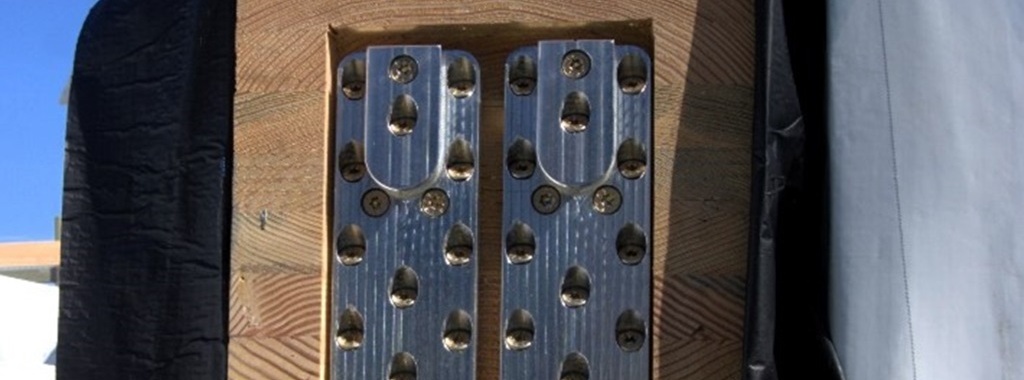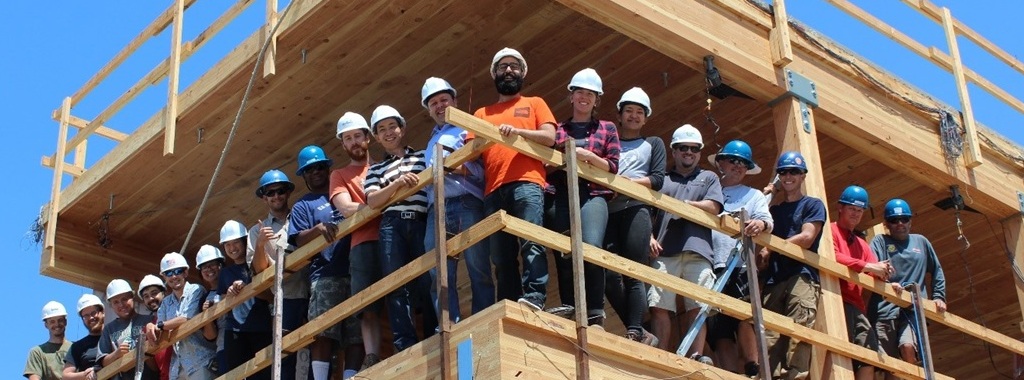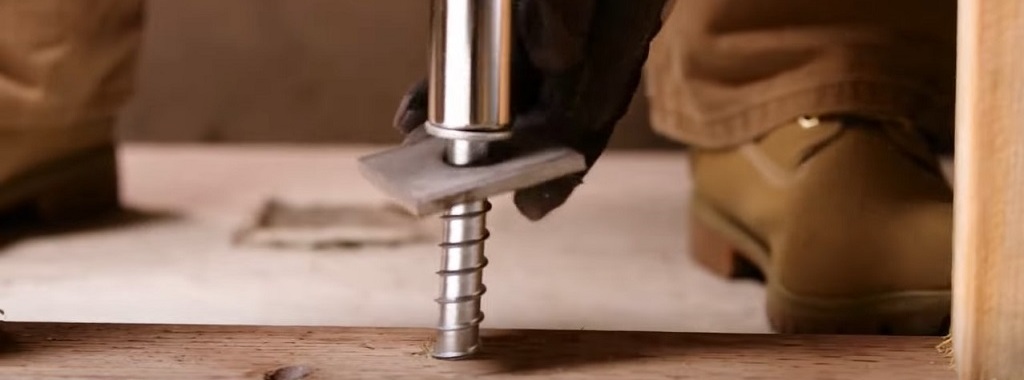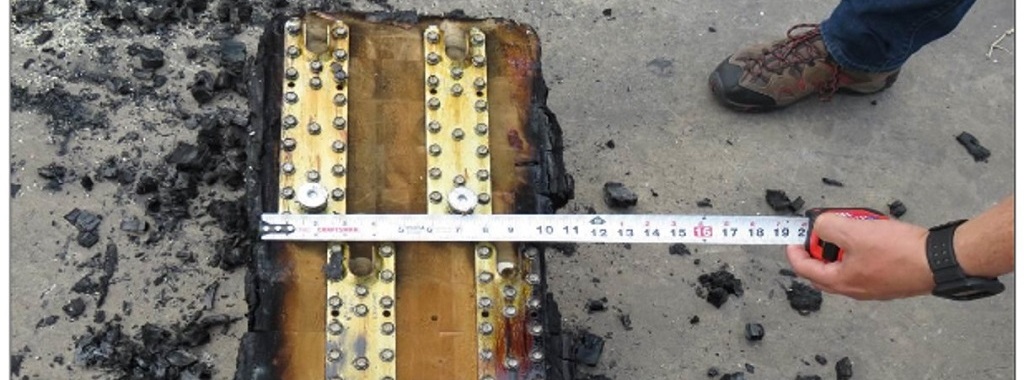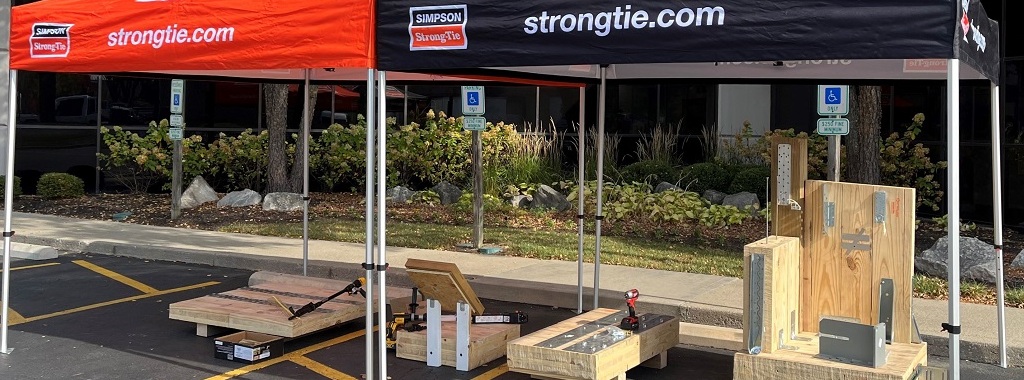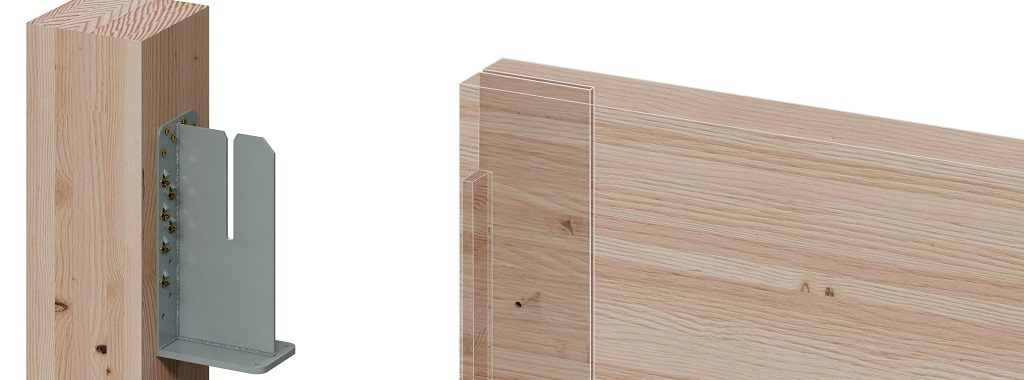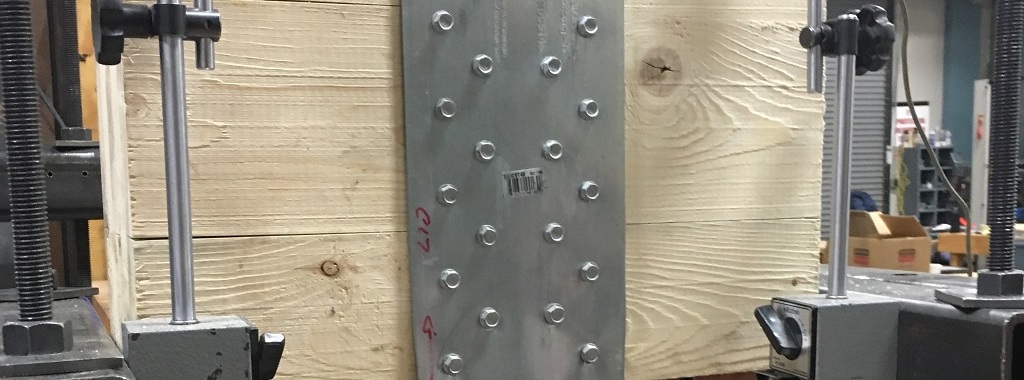Earlier this year, we hosted our first Virtual Training Summit, featuring 16 industry-related webinars covering a range of topics. Customers could register for up to four events and earn professional credits for each session. One session, “Designing Mass Timber Connections,” focused on mass timber and was led by Simpson Strong-Tie Senior Field Engineer Brian DeMeza and Senior Branch Engineer Kelly Sias. In the following post, they respond to some of the questions that they fielded regarding mass timber applications, advantages, and more following their presentation.
Category: Commercial Construction
From Research to Real-World Application: Pioneering Mass Timber Innovation
Brian DeMeza’s journey from pursuing his Master of Science degree at Oregon State University (OSU) to his current role as a Senior Field Engineer at Simpson Strong-Tie has brought him full circle with his recent involvement in the six-story NHERI TallWood project. His hands-on experience in this project played a pivotal role in shaping his passion and focus on mass timber as a potential career path.
Which Anchoring Adhesive Installation Method Is Faster: A Comparison of Core Drilling vs. Carbide Drilling into URM
Have you ever specified an adhesive for an unreinforced masonry (URM) retrofit? If so, you may have wondered about the difficulty of drilling holes at 22.5° from horizontal in order to properly install an anchor to take tension loads.
Allowable Load Tables at Your Service — A Look at the Technical Engineering Bulletin (TEB) for Anchors
One interesting part of being a field engineer for Simpson Strong-Tie is having the opportunity to see how different structural engineers may take different approaches to similar designs. We at Simpson Strong-Tie have come to appreciate these different approaches and embrace this phenomenon by providing multiple resources to aid in the completion of a design. This is very apparent when it comes to the design of post-installed anchors.
Testing Teases Out Hidden Capacities of Reclusive Connector — New Data Available on the Simpson Strong-Tie® CBH Concealed Beam Hanger for Mass Timber
In North America, CLT and mass timber construction have garnered considerable press over the last few years, both inside the building industry and beyond. The burgeoning development has inspired new research centers and at least one annual conference — now in its eighth year and attracting scores of presenters and exhibitors and hundreds of attendees from around the world. Numerous observers are even heralding mass timber, or tall timber, as the necessary future of the fast-growing built environment.
Overview of the Strength-Based Cracked and Uncracked Masonry Design Standards for Adhesive Anchors
We’re entering the year 2024 — welcome to the world of cracked and uncracked masonry. The last time Simpson Strong-Tie wrote a blog post regarding design criteria for post-installed anchors in masonry was in 2019, and ICC-ES was considering the adoption of a revised version of AC58, the Acceptance Criteria for Adhesive Anchors in Cracked and Uncracked Masonry Elements. Acceptance Criteria, or ACs, outline the testing that a manufacturer must comply with in order to get an evaluation report. In some cases, the ACs contain calculations methods if they are otherwise unavailable. If you missed the previous blog post, here is a link so you can explore a bit of the history that has led us to where we are today.
What’s New with Mass Timber?
Simpson Strong-Tie’s Greg Bundy, Senior Branch Engineer in Columbus, Ohio, recently led a training webinar on mass timber advancements. The workshop covered topics like the NHERI TallWood Project and a new guide for cross-laminated timber diaphragm design. The hands-on session featured installation of innovative products for structural engineers.
Up to the Test: Introducing the Heavy Seated Knife Plate Beam Hanger for Mass Timber
In response to the increasing demand for mass timber construction, Simpson Strong-Tie has created mass timber solutions for these builds. These product addition, include our Heavy Seated Knife Plate (HSKP), ACBH concealed beam hanger, and CBH concealed beam hanger. Gain insights into the design, testing, and efficiency of the HSKP in achieving high loads with fewer fasteners. The blog underscores the structural mechanics and the ongoing process of pushing connector limits in mass timber construction.
Developing High-Capacity Tension Straps for Mass Timber Engineering
Mass timber buildings use cross-laminated timber (CLT) or mass plywood panels to create horizontal diaphragms to transfer wind and seismic forces into the vertical elements of the lateral-force-resisting system. Spline connections resist shear forces at the panel joints, which I discussed in this blog post. I wanted to discuss several options for tension straps used for chord splices and collector forces. This blog will not discuss methods for calculating design forces. Instead, I am going to focus on several strap products and how we developed their allowable loads.
Connecting Engineers, Innovation, and Fun: Simpson Strong-Tie’s Topgolf Event in Utah
The Simpson Strong-Tie structural steel team held an event earlier this year at Topgolf in Vineyard, Utah, to host 65 engineers. The view from the green range at this new Topgolf location was breathtaking with snowy peaks, and the view inside was not bad either, since you could see our Yield-Link® moment connection.

